And here is the 2nd post for today. Finishing up the antique quilt portion of the exhibit at Muzeo in Anaheim, CA.
This first quilt is called "Split Nine Patch", maker unknown c. 1890-1940.
The plaque for this quilt challenged viewers to find the repeating unit in the quilt. Can you see it? I learned that this pattern was mostly a regional pattern from southeastern Pennsylvania and southern New Jersey.
Take a look at this gorgeous quilt! "Log Cabin, Pineapple Variation" by Anna Hazel Burmeister of Waukesha, Wisconsin c. 1894.
I would really like to make one of these one day! Of course, I would paper piece mine!
This next quilt looks very modern to me, but was made around 1902 for "Viola", and is called "Wild Goose Chase".
This quilt would have been extremely difficult to date because of the solid fabrics used. Luckily the label inscription helped. Just another reason why we should all be labeling our quilts, right?
Did you learn to quilt by making a sampler quilt? This is "Sampler Album", maker unknown c. 1900-1920.
Ok, for this one I want to point out one of the blocks - the Swastika Patch (forth down on left hand side). Now, I don't want to spark a discussion about Hitler, the KKK, or any modern adoption of this pattern for the logo of discriminating groups. I am well aware that the symbol evokes strong emotions from many of us. What I do want to know is, this pattern was very popular prior to WWII, what happened to all the quilts made from this pattern? They must be somewhere, right? I never see antique quilts made entirely with this pattern exhibited. I have several older books with the patterns to make entire quilts with this block, so they must exist. Or do you think they were destroyed because of what the symbol means to us now? I am merely curious. I don't want to start my own collection of Swastika quilts or anything. It just seems from a historic standpoint, and even an art standpoint that it would be a bit sad if the quilts were all destroyed. What do you think?
Next week I will finish up my visit to Muzeo by showcasing a few quilts from the modern room of the exhibit.
Thanks for reading,
Jen
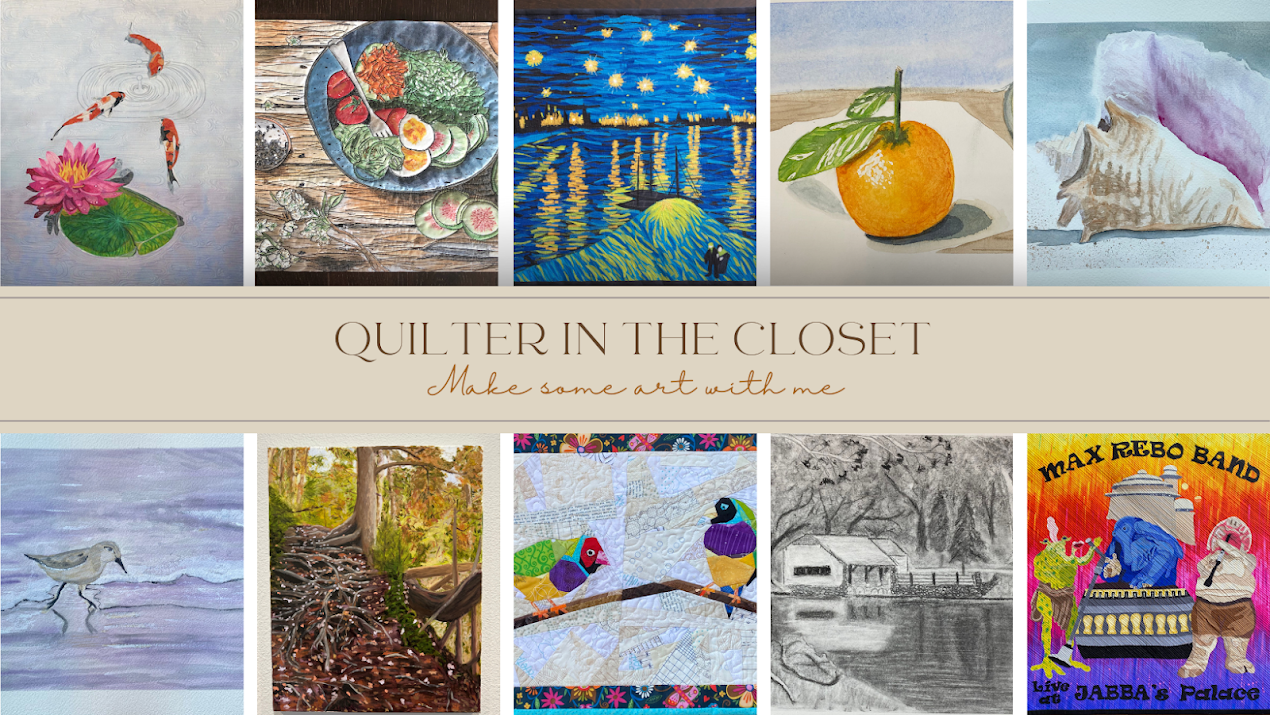
Quilter in the Closet: My artistic journey as I learn, try, and am inspired by multiple techniques, including quilting, painting, drawing, and who knows what else!
This blog may contain affiliate links to products. As an affiliate, I earn a small amount from qualifying purchases; however, it does not affect the cost of the item to you, nor am I compensated if you do not purchase.
Subscribe to:
Post Comments (Atom)
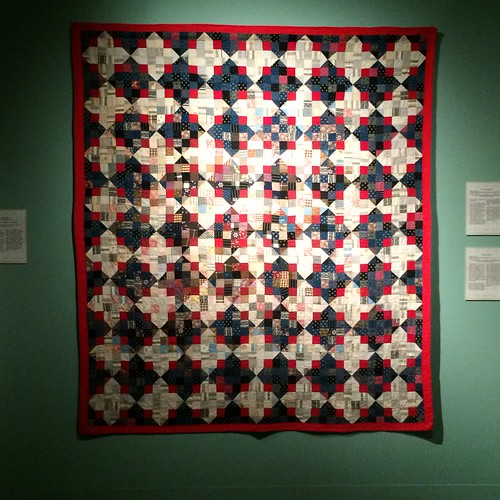
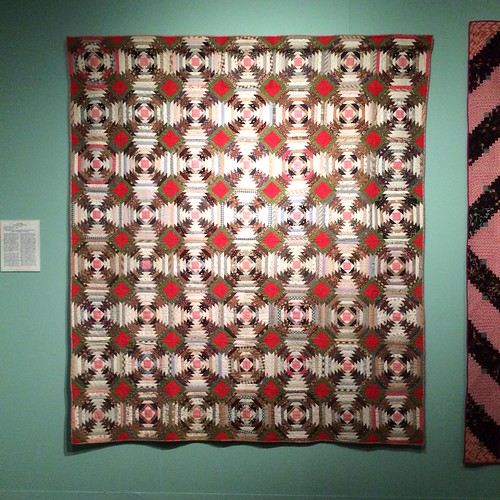
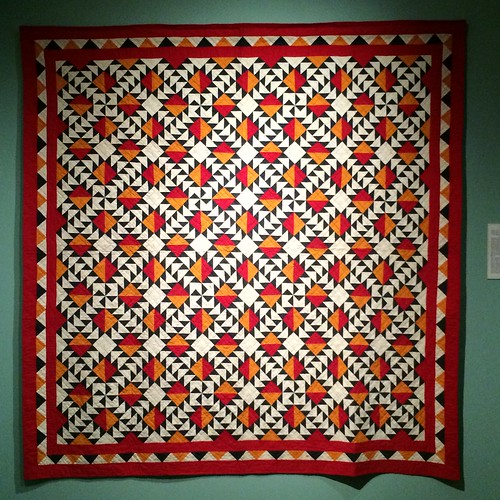
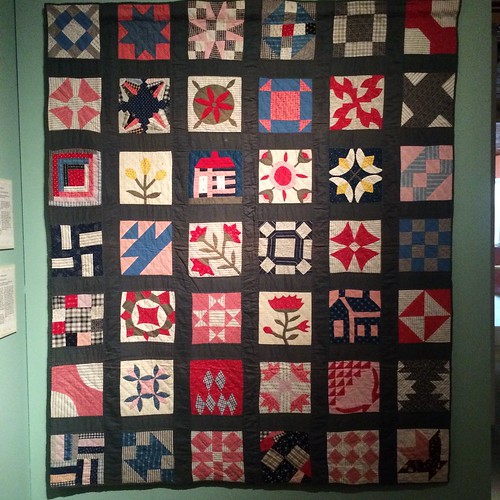
Interesting question Jen. What a shame what is a beautiful pattern gets co-opted by fanatics. My guess would be those quilts were destroyed because we can no longer really look at them without that symbolism jumping out at us.
ReplyDeleteFirst quilt: it took me a few minutes, but I think the repeating pattern in the first quilt is just a square. Colour/value placement is super important of course. Do you know what the size of the finished quilt is, or what size the squares are?
ReplyDeleteAnd re: the swastika, I saw it first as an unequal split rail fence, I think mostly because the sashing is similar in colour to the arms of the swastika. We (as a culture) are big on revisionist history so I can see the suppression of quilts with "offensive" blocks. The swastika lends itself nicely to a signature quilt. Wouldn't that be great to see?
Great quilts! I thought the block that you identified as the Swastika Patch was a regular Rail Fence block. I saw a quilt long ago at a local antique store made with a swastika design. I didn't buy it more because I didn't care for the colors rather than not caring for the symbolism. I've also seen it on china as well. Again, I didn't buy the set because I had no use for them but thought they would be great conversation starter pieces at a dinner party if nothing else. Interesting thoughts though. I'll be more on the lookout for other quilts with that block in them now that you've raised the question of their existence.
ReplyDeleteI can't zoom in on #1 but I think each block is a Nine patch with top row (say) cream cream acute HST, middle row cream red dark and bottom row acute HST dark dark?
ReplyDeleteThe pineapple - good grief! And the geese? I saw squares with spikes and had to work hard to see the geese! And similarly I had to really look for the swasticker, I saw a rail fence block! Such a shame if they have been destroyed x
It really us too bad that a design can be derailed by political factions. I learned that the hard way after designing a large pinwheel wall hanging made by manipulating a photograph of trees in my back yard. While most people that saw it loved it, my mom immediately saw a swastika pattern and was horrified that I would use that symbol in my art. I was devastated as I was thinking of entering it into a show. I won't now.
ReplyDelete